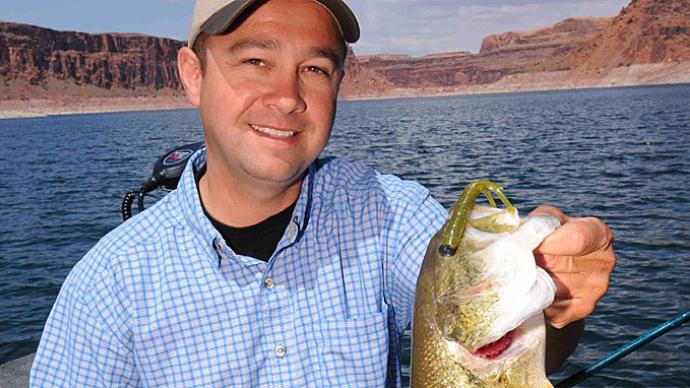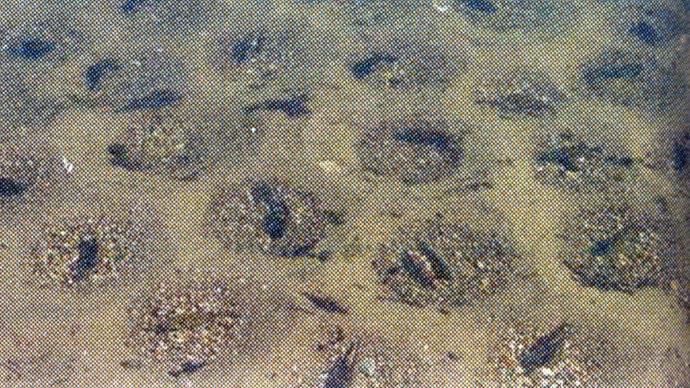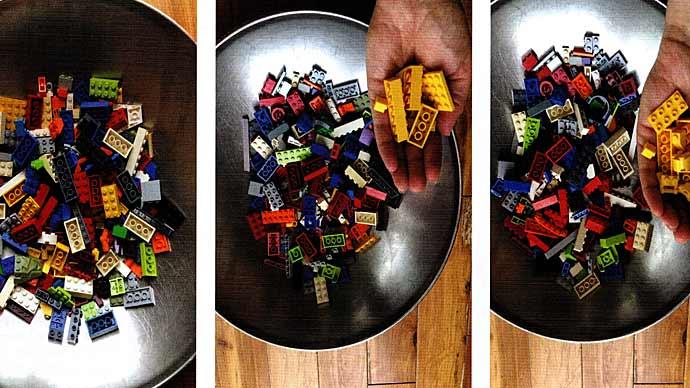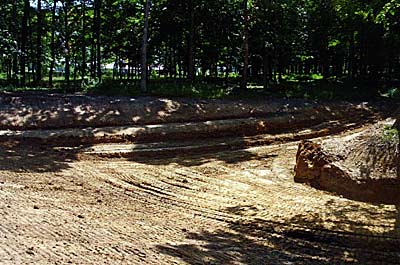
It's that time of year again. Spring is well underway—and that means spawning soon in your waters.
The Pond Boss Forum has numerous threads on aiding spawning by making spawning beds (nest sites), adding cover (brush or dense trees) near nesting sites, or supplemental feeding to increase the numbers and growth of hatchlings. A few years back, we even did an issue on decreasing hatchling numbers and survival if the need arose. For example, removing Yellow Perch egg ribbons from the pond to reduce potential hatching numbers is a method of population control, as is interrupting spawning nests to make eggs and fry more vulnerable. A study titled Factors Influencing Nest Survival in Florida Bass by Z. Slagle and S. L. Shaw in Transactions of the American Fisheries Society 146:696-702, 2017 Volume 146.2017 - Issue 4) (© American Fisheries Society 2017) gives insight. Male bass create shallow nests in the substrate, where females deposit their eggs. The male fish guards the fertilized eggs against predators until after they hatch, grow, and become free swimming or swim-up fry, often staying with the swim-up fry until the school of fry (or fry ball) disperses. Knowing what can disrupt nesting and survival is a must to use this tool.
The survival of both Largemouth and Smallmouth bass offspring can depend on several physical and biological factors, including the size and age of the guarding male, bed fishing pressure, and environmental changes during the nesting period. Many nest attempts fail, and hatchling abandonment is expected due to storms, sudden temperature changes, angling, and nest predation. If the male bass abandons the brood (or is fished or runoff off of the nest), the brood is unlikely to survive long. Often, bass nests are easily visible and can be fished. If the guarding male is removed, you have likely eliminated his hatchlings from increasing the bass population. This can be an effective tool in reducing bass recruitment and overcrowding. This method can also be used for any nesting type fish, like bluegill. For example, Bluegill populations can be managed like bass by interrupting the nesting process. However, it takes more effort because bluegill often spawn multiple times during a year. Keep in mind, though, because bluegill are colony spawners, you can interrupt many nests at the same time in one location. However, this method will not work on pelagic spawners like Shad and Golden Shiners.
On the plus spawning side, some factors can help increase spawning success. Bluegill (Lepomis macrochirus) Spawning Periodicity and Hatching Duration in the Northern Great Plains, USA by Jeffrey C. Jolley, Kris R. Edwards & David W. Willis in Journal of Freshwater Ecology. Pages 29-38 Published online: 06 Jan 2011 discusses some factors affecting bluegill spawning. Factors may include abiotic factors such as physical habitat, temperature, weather, and biotic factors such as food availability and competition, predation, and lake productivity. Some factors, such as supplemental feeding, reducing predation using blocking nets, and possible fertilization, can be augmented. Temperature and weather - well, those are better left alone.
The Pond Boss Forum has extensive information on augmenting physical habitat in its Structure archive. This is one area where pond owners can increase or decrease spawning. An article titled Factors Associated with Bluegill Nest Site Selection within a shallow, natural lake by Kristopher J. Stahr, Mark A. Kaemingk & David W. Willis in the Journal of Freshwater Ecology. 2013. D01:10.10 80/0270506020127 55647 gives a good overview of the factors affecting the nest selection processor and the habitat requirements for bluegill in their early life stages.
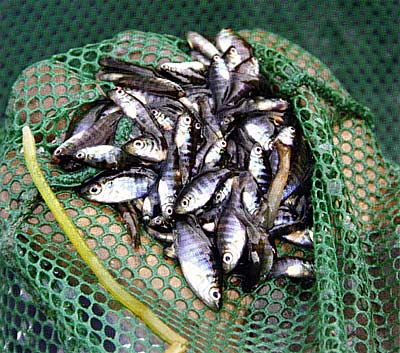
In that study, the authors found suitable spawning substrate throughout West Long Lake, and all nests were located along the south shoreline (wind and wave protection). In contrast, other studies found nest sites along multiple shorelines in areas with gravel and hard bottom substrate, which were not found throughout the lake.
Therefore, bluegill in that lake appeared to select sites primarily based on substrate with less influence from wind and wave protection. Alternatively, bluegill nesting substrate was similar throughout West Long Lake. It contained lots of sand, which allowed bluegill to nest in areas that provided the most protection from wind and waves. Research identifies the following factors that pond managers can manipulate to aid or reduce bluegill nesting success: substrate composition (sand and gravel), submersed plants and woody cover, wind and wave action, and siltation.
We can add optimum-sized gravel to nests, locate nests in places with the least wind and wave action, remove or add as-needed plants and woody cover and avoid locations where silting could exist. Another idea is to leave large nesting male bluegill alone during the spawn, as removing them from guarding the nest even for short periods results in high predation on the fry/eggs.
Thank goodness spring is upon us, and the spawning ritual is about to begin.
Reprinted with permission from Pond Boss Magazine

